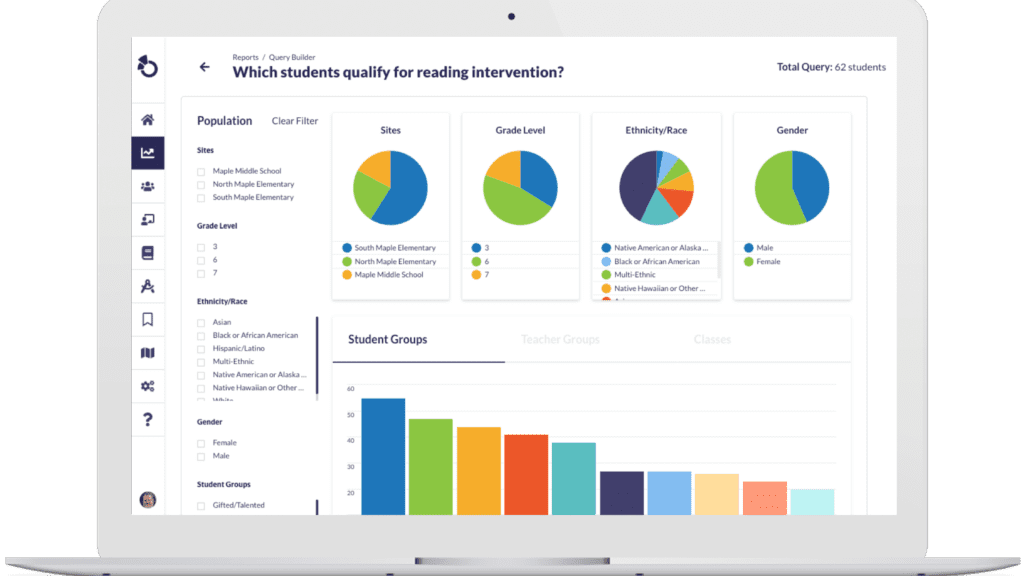10 Things We Learned About Standards-Based Grading from Lee Ann Jung
By: Otus
Go Further With Standards-Based Grading
This post is part of our Standards-Based Grading: Everything You Need to Know series, which answers many of the most popular SBG questions and provides additional resources for learning.
If you are interested to see how Otus makes SBG simple, request a demo and we would love to show you!
Standards-based, mastery-based, and competency-based learning all have the same end goal in mind. They aim to create healthy assessment and grading practices so students master a set of standards or skills to the greatest degree possible.
We recently asked Lee Ann Jung to facilitate a webinar called, “My parents don’t like standards-based grading. Now what?”. During this 60 minute session, she shared her experiences with SBG and the best path toward getting buy-in from students, parents, and faculty.
Ten Things We Learned from Lee Ann Jung
1. The purpose of daily assessment is not to generate a grade or to accurately communicate where a student is. It’s to inform our instruction.
2. Schools that have successfully implemented a standards-based grading initiative start with getting everyone, including parents and teachers, on board with the purpose of assessment. Think of this as your north star for the initiative.
3. When the purpose of assessment, both formal and informal, is to inform instruction... the goal is to ensure that all students get to mastery. Measure what matters and realize grades are no longer about sorting and classifying kids.
4. The heavy lift to move to standards-based grading is building a culture of healthy assessment with the students, families, and faculty. When that comes first, the change in the report card is compelled. Start with the why and work back to what.
5. Invite families early on into the conversation about the school culture, who you are as a school, what you value for students, and how these types of assessment practices support all students getting to mastery.
6. For standards-based learning to be successful, confidence and competence are crucial. We must be ready to lead conversations. Can all faculty at your school lead a conversation with families on mastery, grade inflation, percentages, averaging, and rubrics?
7. What will colleges and universities think about standards-based grading? They’re already getting all kinds of transcripts. There are applicants from all over the world, homeschool, Montessori, and more. They have their ways of making sense of all kinds of grades.
8. The Hanover Research Council report states that “Generally, admissions offices treat all grades as welcome indicators of high school performance while implicitly acknowledging that every school has a unique perspective, student body, and system.” None of the college admissions offices contacted expressed concern or a negative view of a standards-based grading transcript.
9. Admission offices recalculate GPA based on school profile and student data. They have algorithms in place to take into consideration student performance at high schools and how historically other students from that school performed freshman year at the university. Universities know how difficult classes are at your school, regardless of your grading system.
10. You are not alone! Many schools are encountering obstacles in way of the various initiatives they’re implementing.
Technology is a Tool
At Otus, we believe that for any initiative to be successful, it must begin at the human level. Technology is simply a tool, and it’s only as good as the person using it. Note: there’s no mention of technology throughout our key takeaways from Lee Ann’s webinar on standards-based grading. Rather, she emphasizes creating a culture of learning, instilling confidence and foundational understanding in faculty, and creating community buy-in. Once those conditions are in place, it’s time to consider a platform to use student data to inform teaching.
Otus is designed for K-12 school systems that use traditional, standards-based, or “transitional” grading. We are unique in that we help ensure parents and families also have the tools necessary to understand this shift in teaching and learning.
We are inspired by the work of Lisa Westman, Lee Ann Jung, Rick Wormeli, Tom Guskey, our courageous clients and their students, and parents who are struggling to understand this “new” way of grading. Otus is one K-12 learning platform to teach, grade, analyze, and plan. Interested in bringing Otus to your school community? Request a demo below, and let’s chat.
Related Resources
Request a demo!
See exactly how Otus can help your school accelerate student growth and improve student outcomes – all while saving educators time.





